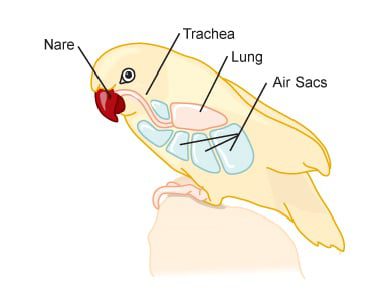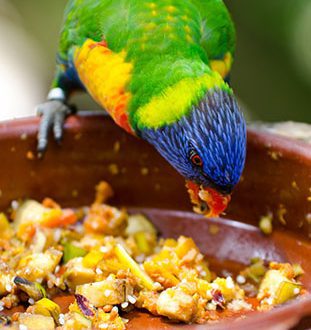
aspergillosis in parrots
parrot aspergillosis is an infectious disease caused by the development of a fungus of the genus Aspergillus. The disease can be local and diffuse. With local aspergillosis, the lungs and air sacs are affected, they form a dense area of tissue (granuloma) around inflammation and colonies of fungi. In the diffuse type, other organs are also affected. The disease can be acute or chronic. Transmission of aspergillosis from bird to bird has not been proven. For an accurate diagnosis, it is necessary to test the bird to find out that the fungus that caused the disease belongs to the genus Aspergillus. Fungal spores of this genus are ubiquitous. Most often they can be found in the feed or bedding. Spores are very tenacious and develop well with access to oxygen and humidity from 15%. Factors that can cause aspergillosis: contaminated incubators, food, bedding, poor hygiene, stress, lack of vitamins, prolonged use of antibiotics, hormones, the presence of diseases, stress. More often Of all parrot species, red-tailed parrots (Pionus), grays, Amazons, cockatoos and macaws are most susceptible to aspergillosis. There is also an opinion that budgerigars, grass parrots and cockatiels can get sick. Inhalation of spores in immunocompromised birds can lead to infection. The number of spores that enter the body plays an important role in the development of the disease. Usually, the infection develops with frequent and large numbers of inhaled spores. Mushrooms can also enter the body through ingestion, through open wounds. In most cases, aspergillosis begins in the respiratory system. Then it can move to other organs – the kidneys, adrenal glands, lungs, liver, reproductive organs. Most fungi of the Aspergillus genus secrete toxic toxins that poison the bird’s body, affect the kidneys and liver. The clinical symptoms of the infection depend on the site of the lesion. Even an outwardly healthy bird can carry foci of fungi and get sick from several months to several years. Most often, the symptoms of the disease appear in the later stages. Associated symptoms are weakness and exhaustion. If untreated, the fungus grows in the affected organ and destroys it. When the brain is damaged, one can observe impaired coordination, head tilts, paralysis. It should be noted that many parrots with self-pinching suffer from a fungal infection, trying to pinch the place where the affected organ is located. The diagnosis is made on the basis of blood tests, x-rays, endoscopy and research crops. After the diagnosis is made, treatment is prescribed individually, and it will last long enough. Internal fungal granulomas are removed surgically. When granulomas appear in vital organs, such treatment is impossible. Of the drugs used various antifungal drugs. In case of damage to the respiratory system, inhalation is used. When treating poultry, it is necessary to remove all foods that contribute to the further development and re-infection of aspergillosis – nuts and grain mixtures, they may contain spores. Remember that the disease is easier to prevent. Do not give birds unprocessed shelled nuts (especially peanuts, as the shells are in the ground) and fruits. Check the quality of the feed by sprouting, do not use feed and bedding of dubious quality.





